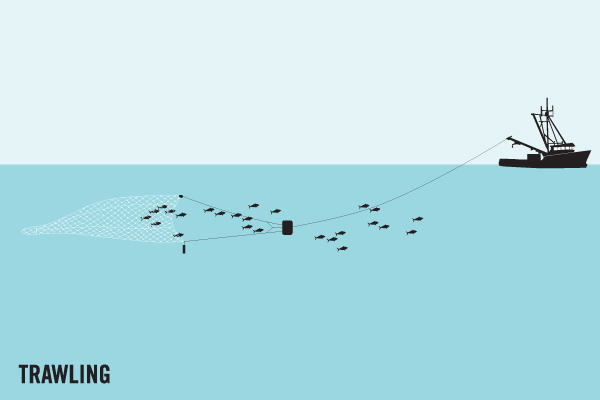Average Weight/Length
Averages 1-3 pounds, but this is the largest of the Mullets and can grow to at least 10 pounds on rare occasion. World record 6 pounds, 15 ounces.
Other "Popular" Names for this Fish
Jumping Mullet, Black Mullet
Location Habitat
Most shallow coastal waters, and roams far into fresh water. Adults are found in coastal waters, often entering estuaries and rivers, sometimes far-up-river, lagoons and hypersaline environments. They are usually in schools over sand or mud bottom (Ref. 2850), between 0 and 10 m, occurring equally in tropical, subtropical and temperate waters. They are mainly diurnal, feeding on detritus, micro-algae and benthic organisms. Juveniles feed on zooplankton until about 3.0 cm SL. Reproduction takes place at sea, at various times of the year depending on the location. There is absence of an obligatory freshwater phase in the life cycle. Females spawn 0.8 to 2.6 million eggs which develop at sea (Ref. 74912, Chen & Su 1986). Sexually mature at 3 to 4 years (Ref. 74902). Maximum length reported as 120 cm SL remains to be confirmed (Project MUGIL). Maximum weight reported as 12 kg seems too high for the area and remains to be confirmed
Biology & Physical Description
Head rounded; small mouth with rubbery lips; forked tail. Color is generally dark above - gray or brown - and white or light gray below. Longitudinal stripes generally quite noticeable. Dorsal spines (total): 5; Dorsal soft rays (total): 7-9; Anal spines: 3; Anal soft rays: 8 - 9. Diagnosis: body stout, cylindrical in cross-section, slightly compressed; head broad and flattened. Well developed adipose eyelid covering most of pupil. Upper lip thin and without papillae, armed with 1-6 rows of fine teeth; hind end of upper jaw reaching a vertical line from anterior eye margin; maxillary pad not visible below corner of mouth when closed; origin of 1st dorsal fin nearer to snout tip than to caudal-fin base; anterior parts and bases of 2nd dorsal and anal fins with a moderately dense coverage of scales; pectoral axillary process; 14-15 scale rows between origins of dorsal and pelvic fins
Life Cycle & Mating Behavior
One spawning aggregation was observed in detail. This consisted of five fish, a female and four males. Males would press against the female, which took place as the entire group moved along slowly, facing into a fairly strong tidal flow.
Geographic Species Map (Fishbase.org Map)
|
|

|
Summary of Distribution: Most shallow coastal waters, and roams far into fresh water. Cosmopolitan in coastal waters of the tropical, subtropical and temperate zones of all seas. Eastern Pacific: California, USA to Chile. Western Pacific: Japan to Australia. Western Indian Ocean: from India to South Africa. Western Atlantic: Nova Scotia, Canada to Brazil; Cape Cod to southern Gulf of Mexico; absent in the Bahamas and most of West Indies and Caribbean. Eastern Atlantic: Bay of Biscay to South Africa, including the Mediterranean Sea and Black Sea. |
|
Note: Distribution range colors indicate degree of suitability of habitat which can be interpreted as probabilities of occurrence (fishbase.org) |
|
Sport Fishing Techniques
|
|
TrawlingTrawling is when.... |
|
Tackle & Baits
A cast net is by far the best bet for catching Black Mullet, with the canepole a distant second. Mullet primarily feed on algae and do not bite in the usual sense. They will, however, take many small baits into their mouths briefly as they forage. Nearly all hook-and-line Mullet fishermen practice their art in freshwater streams or coastal canals. They mostly are canepolers who have the patience to stare at a float for extended periods, staying ready to heave at the slightest movement of the bobber, which indicates that a roaming Mullet is mouthing the bait. And baits are many indeed. They include bits of white plastic worm, real earthworms, corn, dabs of bacon and some other odds and ends. It's possible to catch Mullet by fly casting, but to do it you have to discover a situation in which the fish can be seen mouthing algae or other floating detritus at the surface. A fly of similar color, cast next to the floating stuff, is often taken in. But, like a canepoler, the fly fisherman must be constantly observant and ready to strike as soon as the take occurs; otherwise, the fly will be expelled.
Game Rating
Game Rating : 7/10
Game Description :
A zippy, frantic fighter.
Food Rating
Game Rating : 9/10
Game Description :
Excellent, both flesh and roe. Widely cultivated in freshwater and brackish ponds. Marketed fresh, dried, salted, and frozen; roe sold fresh or smoked; also used in Chinese medicine
Picture (Fish)
|
|
|
|
|
|




















 Striped Mullet
Striped Mullet 






